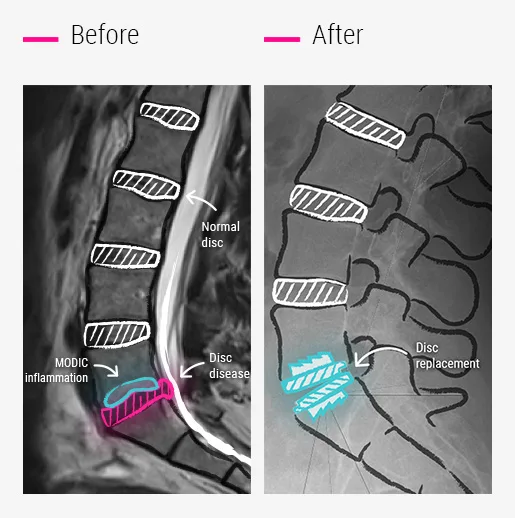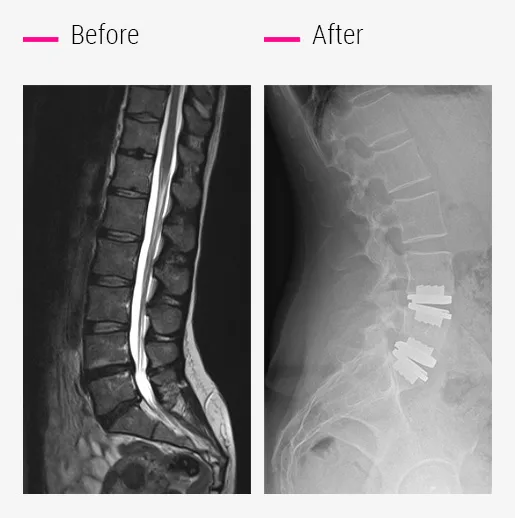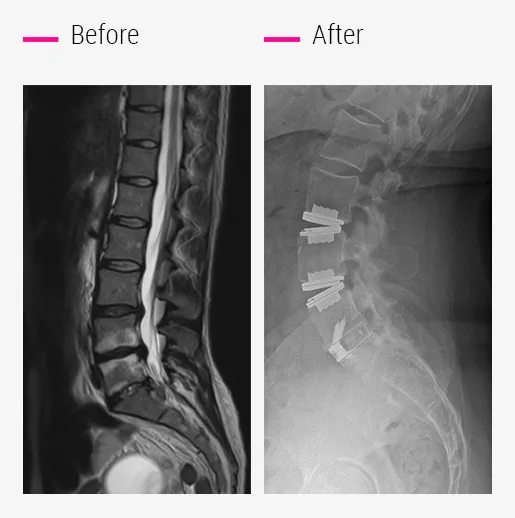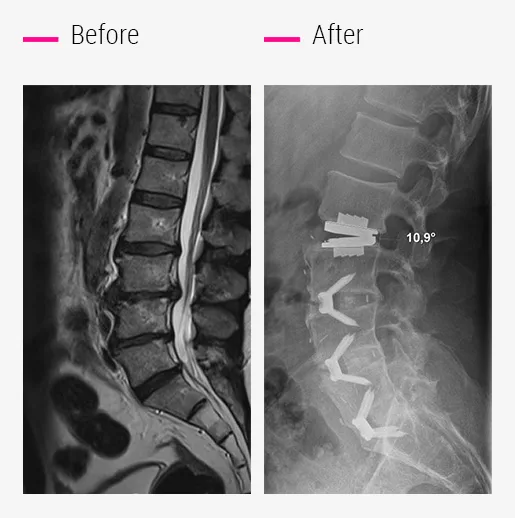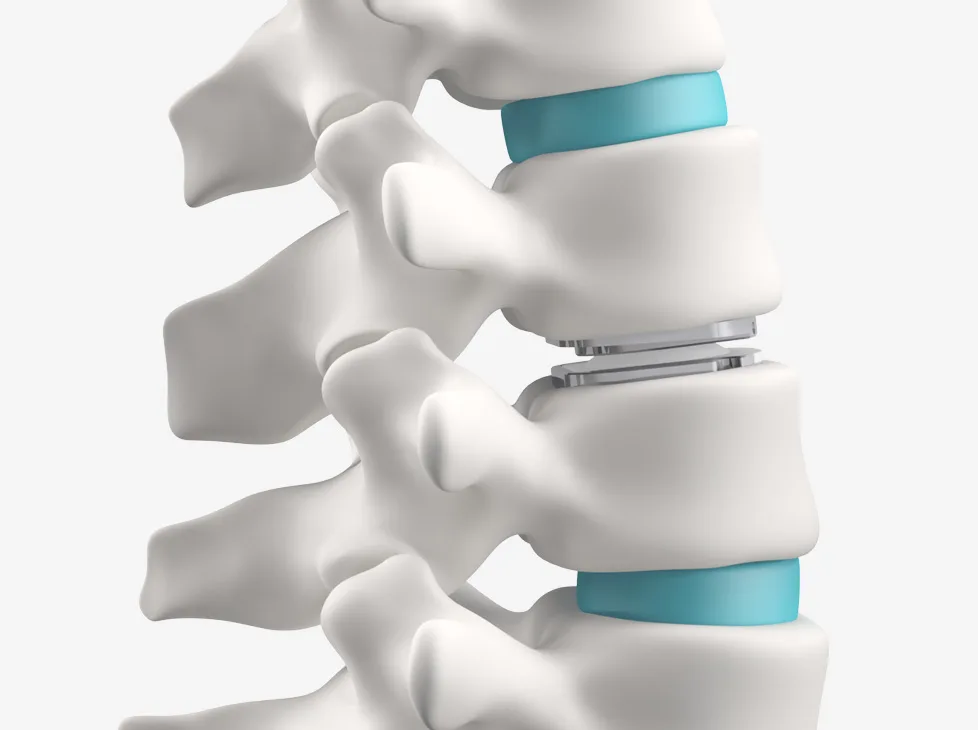
PRODISC-L® TOTAL DISC REPLACEMENT
By far, the best solution for patients with lower back pain, recurrent herniated disc and persistent sciatica. Proven to:
• Permanently relieve pain
• Restore spinal strength & mobility
• Allow a return to strenuous activities and competitive sports
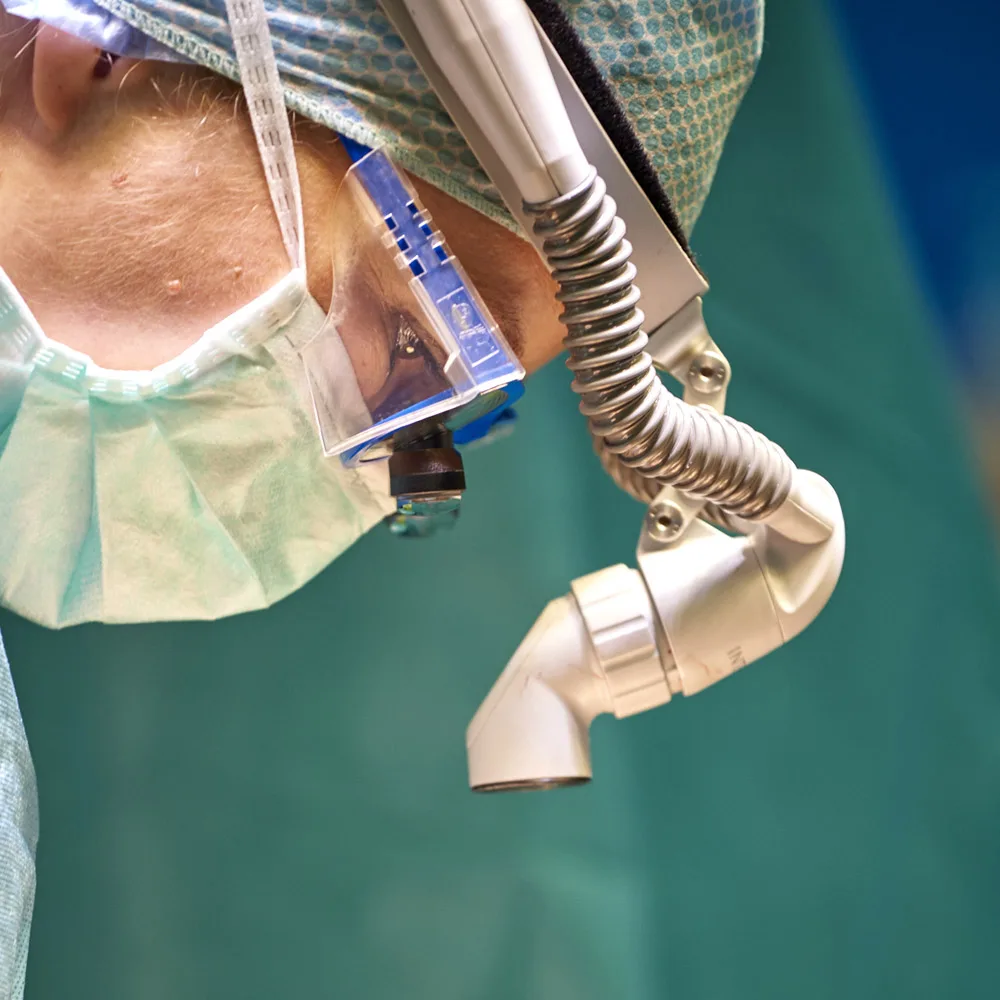
THE IMPLANTATION TECHNIQUE
The surgical technique for inserting the implant is minimally invasive. It allows the surgeon to access the spine through a 5 to 8 cm incision through the abdomen in a natural space around the peritoneum sac, which plays a protective role for the abdominal organs. The main blood vessels (aorta, vena cava) are then mobilized, enabling complete visualisation of the disc.
The only element severed throughout the entire approach is the abdominal muscle sheath, which will be sutured at the end of the procedure.
Why operate through the abdomen?
The disc is in the front part of the spine, while the nerves and spinal cord pass through a canal at the back of the spine. By accessing the disc through the abdomen, the Prodisc-L© implant can be placed without disturbing the nerve roots.
Consequently, there is minimal risk of spinal nerve damage or permanent numbness, tingling or burning resulting from the procedure.
Prodisc-L®
The world’ s leading disc replacement implant for over 25 years, patented by the CCV Montpellier.
Prodisc-L® is a patented surgical disc replacement technology, proven to maintain spinal balance and motion, reduce wear and tear on adjacent discs and accelerate resumption of normal activities.
Chrome-Cobalt alloy plates and PEEK joint implant inlay
Prodisc-L® fixation by means of pins and its porous Titanium coating
Mobility of the Prodisc-L® artificial disc
The Prodisc-L® adventure
From Dr. Thierry Marnay’s very first patients to global success
Patients implanted with the Prodisc-L® in 1990 are still being monitored at the CCV Montpellier, making it the most experienced centre in the world for disc replacement surgery.

1st Prodisc-L® at the CCV in Montpellier
1st Prodisc-L® in the USA
Dr Thierry Marnay trains American surgeons
The Prodisc-L® is the most frequently installed implant globally every year for the last 25 years
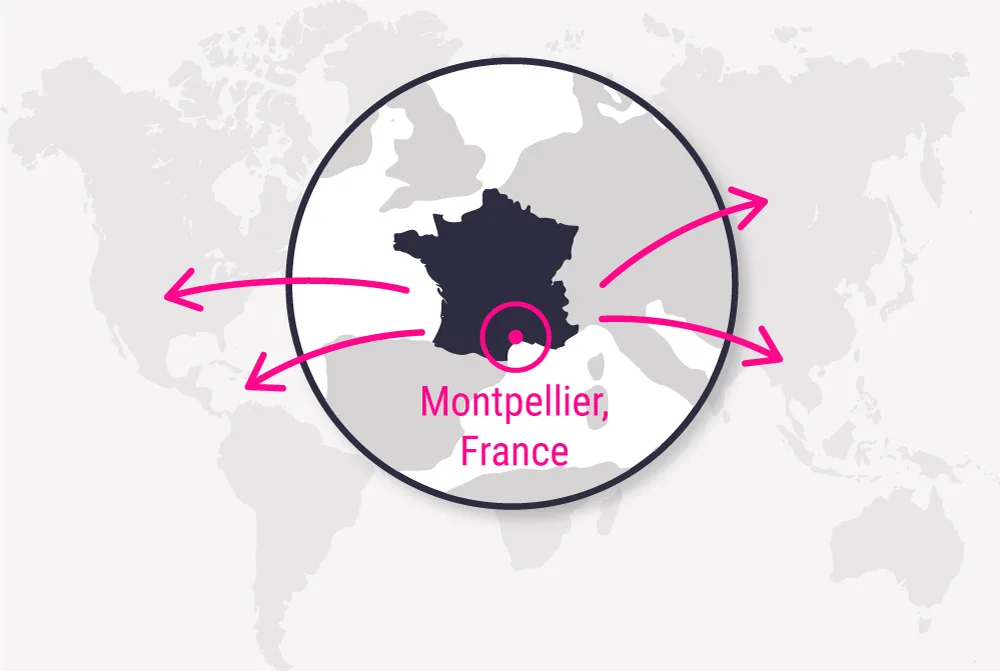
Having conquered Europe at the end of the 1990s, the Prodisc-L® disc replacement then became widely used globally, notably with FDA approval in 2006.
The patients who underwent the first disc replacement in the early ’90s are still being monitored at the CCV Montpellier, and for the moment, no patient has required an implant change.
Consequently, the disc replacement lifespan is considered to be at least 30 years.
Prodisc-L®, the reference
No other disc replacement system has been as widely studied as the Prodisc-L®.
Over 25 years of global clinical practice
The most studied disc replacement system in the world1
More than 540 published studies for over 13,000 patients1
More than 225,000 device implantations and a reoperation rate of less than 1%
1 Results Pubmed, Embase, Ovid Medline® from 1988 to 2017
What to do about recurrent herniation?

These symptoms sometimes occur in people who have undergone discectomy surgery for one or more herniated discs.
It is important to understand that the purpose of a discectomy is to relieve the compression of the nerve by disc fragment ejected from its housing, but it does not treat the disc disease responsible for the herniation, which will continue to progress.
- Prodisc-L® total disc replacement treats the diseased disc and the hernia in a single operation.
in the event of damage to multiple discs?
Up to 4 lumbar discs can be replaced in a single surgery.
Depending on the degree of wear, each disc will be replaced with either a mobile or a fixed implant.

